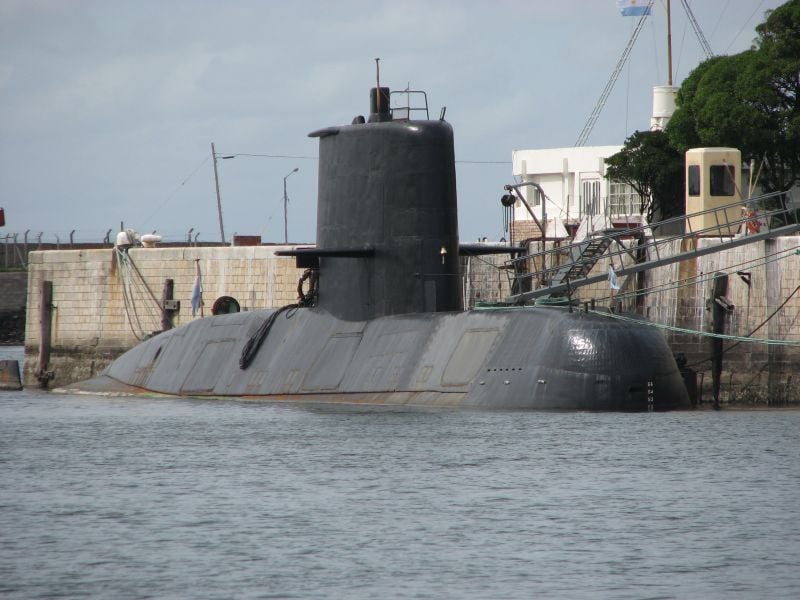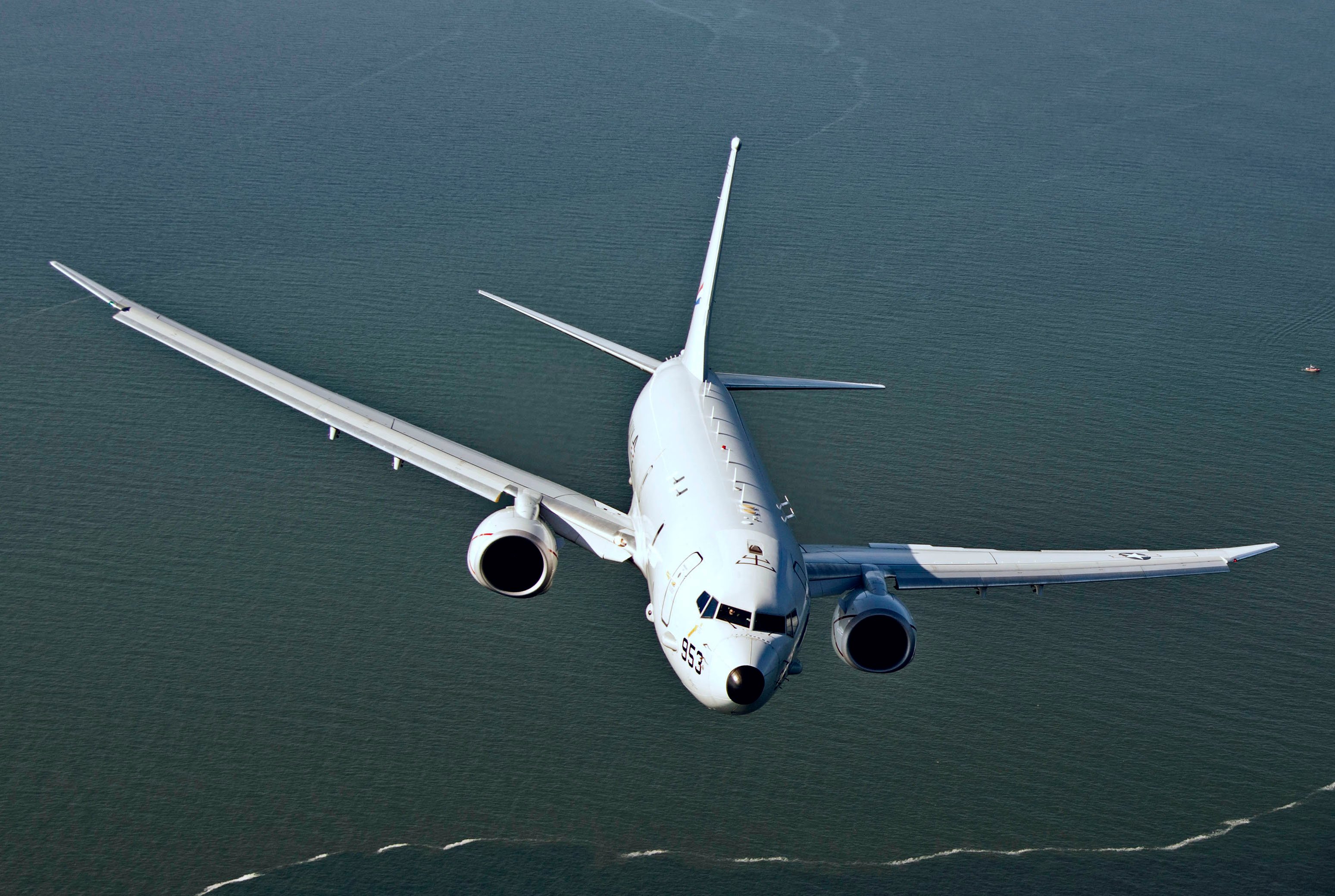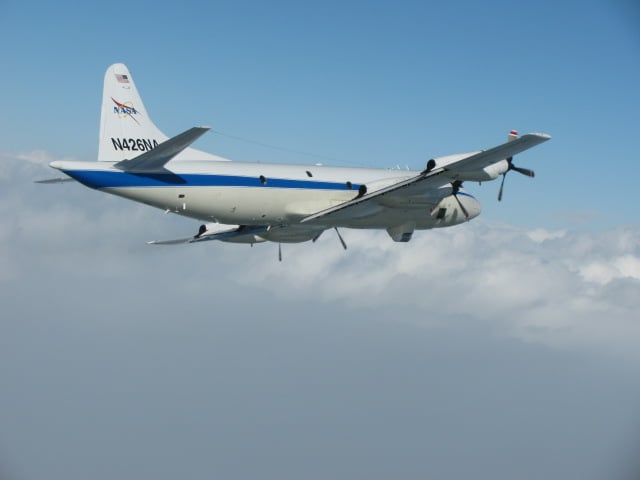
This post has been updated with additional information from U.S. Southern Command.
A NASA research aircraft has joined in the search for a missing Argentine submarine and its crew of 44 and a U.S. Navy sub-hunting aircraft is on the way.
A NASA P-3 Orion is now looking for the diesel-electric attack boat ARA San Juan (S-42), which has not been heard from since Wednesday, according to press reports from the region. Late Friday, U.S. Southern Command announced a U.S. Navy P-8A Poseidon left the Compalapa Air Base in El Salvador to join the search.
“U.S. Southern Command (SOUTHCOM) directed the U.S. Navy to deploy a P-8A Poseidon multi-mission maritime aircraft to Bahia Blanca, Argentina, Nov. 18 to support the South American nation’s ongoing search for the submarine A.R.A. San Juan in the waters of the Southern Atlantic,” read a late Friday statement from U.S. Southern Command.
“The aircraft and its 21-person crew will depart El Salvador’s Comalapa Air Base, where it was supporting counter-illicit trafficking maritime patrol operations. Once in Bahia Blanca, they will join the ongoing international search for the Argentinean Navy vessel and its crew, as requested by the government of Argentina.”

In addition to NASA’s P-3 and the Navy’s P-8, the Argentine Armada has dispatched destroyer ARA Sarandí (D-13), and corvettes ARA Rosales (P-42) and ARA Drummond (P-31).
“Detection has been difficult despite the quantity of boats and aircraft [in the search],”
Argentine naval spokesman Enrique Balbi told reporters.
“Obviously, the number of hours that have passed — two days in which there has been no communication — is of note.”
U.S. defense officials told USNI News the search has been hampered by rough weather in the Southern Atlantic. Earlier on Friday,
“We are investigating the reasons for the lack of communication,” Balbi said, according to Reuters.
“If there was a communication problem, the boat would have to come to the surface.”
The submarine departed from the Argentine Armada naval base in the southern city of Ushuaia, located southwest of the Strait of Magellan, and was headed to its homeport at Mar del Plata, near Buenos Aries. The submarine was last heard from about 250 miles off of Patagonia.
The NASA P-3, a modified anti-submarine warfare platform, had been operating out of Ushuaia as part of its annual Antarctic survey when it was asked to join in the search for the missing submarine, U.S. Southern Command spokesman Jose Ruiz told USNI News.

Outside of the aircraft, the U.S. has not been asked to contribute assets to the search but is preparing specialized submarine rescue equipment in anticipation of a request from Buenos Aries, USNI News has learned.
U.S. Navy Undersea Rescue Command is mobilizing the specialized submarine rescue equipment and personnel in San Diego to crew the Submarine Rescue Diving and Recompression System (SRDRS), two defense officials confirmed to USNI News.
The system can be transported via cargo aircraft and loaded onto a surface ship for rescue operations.
San Juan is one of three Argentine Armada submarines. The German-built TR-1700 attack boat joined the fleet in 1985 and completed a midlife upgrade in 2013, U.S. Naval Institute’s Combat Fleets of the World author Eric Wertheim told USNI News on Friday.
The following is the complete statement from U.S. Southern Command.
U.S. NAVY P-8A POSEIDON TO SUPPORT ARGENTINA SEARCH FOR SUBMARINE
NAVAL STATION MAYPORT, Fla. – U.S. Southern Command (SOUTHCOM) directed the U.S. Navy to deploy a P-8A Poseidon multi-mission maritime aircraft to Bahia Blanca, Argentina, Nov. 18 to support the South American nation’s ongoing search for the submarine A.R.A. San Juan in the waters of the Southern Atlantic.
The aircraft and its 21-person crew will depart El Salvador’s Comalapa Air Base, where it was supporting counter-illicit trafficking maritime patrol operations. Once in Bahia Blanca, they will join the ongoing international search for the Argentinean Navy vessel and its crew, as requested by the government of Argentina.
The P-8A Poseidon is the Navy’s newest maritime, patrol and reconnaissance aircraft and is configured with state-of-the-art sensors and communications equipment, allowing it to support a wide range of missions over large bodies of water, including sub-surface search-and-rescue operations. It can reach an airspeed of 564 mph, has a ceiling of 41,000 feet and a range of 1,200 nautical miles with four hours on station, allowing it to loiter over search areas.
In April, SOUTHCOM deployed a P-8A Poseidon to Galeão Air Force Base in Rio de Janeiro, Brazil, where it took part in an internationally-supported search for The Republic of Korea ship, Stella Daisy, which tragically sank in the Southern Atlantic, off the western coast of Africa.
In the aftermath of Hurricane Maria, P-8A Poseidon aircraft conducted overflight assessment missions, capturing images of conditions on the ground in Dominica to support U.S. foreign disaster assistance operations led by the U.S. Agency for International Development.
SOUTHCOM is one of the nation’s six geographically-focused unified commands with responsibility for U.S. military operations in the Caribbean, Central America and South America.





